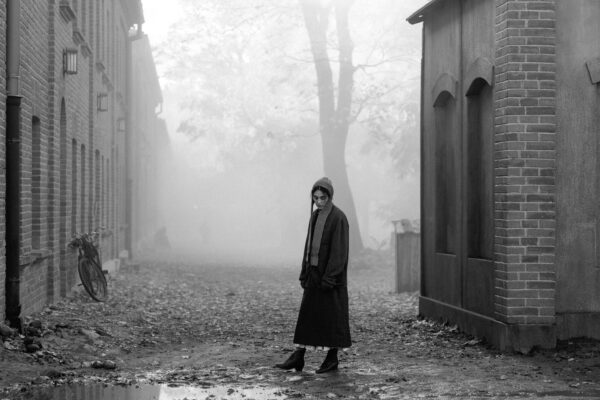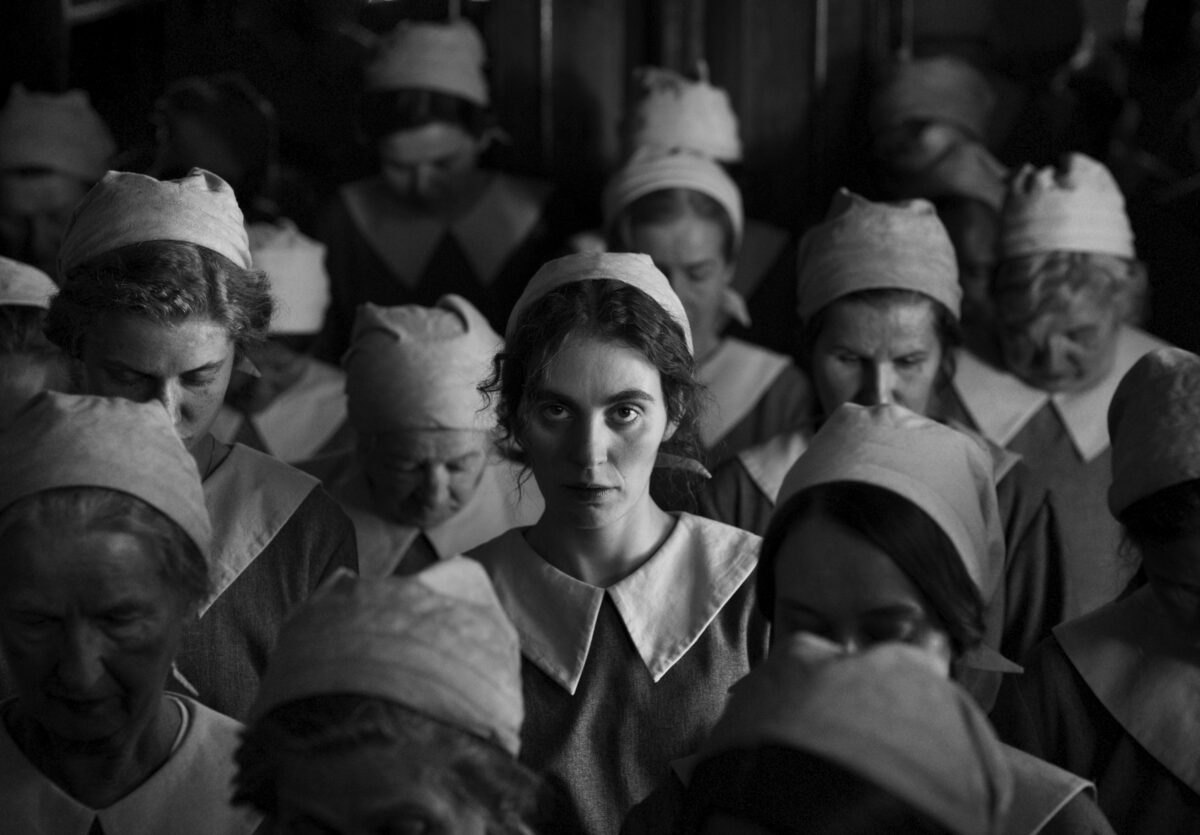“The Girl with the Needle” is Denmark’s submission for the Best International Feature at the 97th Academy Awards. Directed by Magnus von Horn and co-written with Line Langebek, he has created what he thinks is a modern day fairy tale. This film, however, is more grim than Grimm and definitely darker than a Hans Christian Anderson fable, and those were some very negative tales. Filmed in black and white, an already dark palette made even darker with obscure lighting and depressing subject matter, von Horn tells the story of Karoline, a seamstress at the local factory making uniforms for the soldiers fighting in World War I.

Karoline’s life is a harsh one. Her husband has disappeared into the unknown, missing at the front. She barely ekes out a living at the factory, one of the faceless mob struggling with the poverty brought on by low wages and high living costs, and is about to be evicted from her apartment. Appealing to the factory owner, the seemingly kindhearted Jørgen, she begs for a widow’s pension, something he cannot give without a death certificate. A spark is ignited between the two, despite their disparate backgrounds. Karoline becomes pregnant and her true love pledges he will stand by her. His mother, on the other hand, has other ideas and soon Karoline is abandoned, fired from her job and without hope. It is at this point that she meets the woman who will both save her and turn her world into a living nightmare. Dagmar, owner of a candy store, kind heartedly offers her help to Karoline. She runs an underground foster agency finding loving homes for unwanted babies. For a small fee, she will take care of Karoline’s problem and find a better end for the child than Karoline could possibly offer.
All is not as it appears and Dagmar is more the witch in Hansel and Gretel than she is the benevolent fairy godmother of Cinderella. Taking Karoline into her home and allowing her to work, side by side with her, Karoline is, at first, happy and fulfilled, until she is rudely awakened. It is that rude awakening that you will have to discover yourself as you follow Karoline down a rocky road to horror. Suffice it to say that the character of Dagmar is based on a real person, infamous in Danish criminal history.
It is difficult to watch a story as bleak as this one but there are a number of reasons to recommend it. “The Girl with the Needle” is an accurate portrayal of the abandoned underclass in a society that provided no safety net. Although some of the villains seem to be straight out of a Dickens novel, there is nuance. Jørgen’s mother, a stand-in for the wicked queen seen so often in fairy tales, casts out the pregnant Karoline as Jørgen cowers in a corner, unable to go up against his formidable mother. Karoline’s missing husband, Peter, eventually resurfaces but he is far from being able to rescue her. Maimed in the war, he now sports a metal mask to disguise his hideous disfigurement. It is no wonder that she casts him out, treating him like she herself has been treated. And then there’s the mysterious but seemingly beneficent Dagmar, the most forbidding foe imaginable. Karoline is remarkably passive throughout, seen primarily as a vessel through which others act or react, fighting for herself, albeit reluctantly given her circumstances.

All the actors are effective in their roles. Joachim Fjelstrup as Jørgen shows vulnerability and tenderness in a character who has always succumbed to his more powerful mother. We’ve seen this character so often, but Fjelstrup brings a sense of reality to a character whose major strength is in parsing out false hope. Besir Zeciri as Peter finds a way to convey tenderness and hope in a man who society has abandoned to freak shows and the margins. Vic Carmen Sonne plays Karoline as though infused with the hope that someone will come through for her, even though no one ever does. There is both a calculating slyness in her eyes that offsets the unrealistic hope she feels that something good is bound to happen,
The true star of this film is Trine Dyrholm who plays Dagmar with a motherly kindness that covers over her inherent malevolence. That you follow her questioningly, never suspecting the evil of which she is capable, is a tribute to this great actress whose presence has enhanced so many of the great Danish movies like “The Celebration,” “The Commune” and “A Better World.”
As mentioned earlier, Director of photography, Michał Dymek, has filmed in black and white. For this subject matter, it was a wise choice. Unfortunately, for whatever reason, there is not the kind of nuance that would have given it the more subtle shading seen more recently in “Ripley,” the limited series filmed so exquisitely by Robert Elswit in LUT (Look Up Table) using formulas to create the kind of effect that film stock would have produced. Dymek’s photography often has the viewer straining to make out the images. Production designer Jagna Dobesz and Costume designer Malgorzata Fudala have accurately depicted the post world war era of poverty and angst. The dirt in every corner and the sound of rough linen scratching the body are palpable.
In Danish with English subtitles.
Opening December 6h at the Laemmle Royal.










